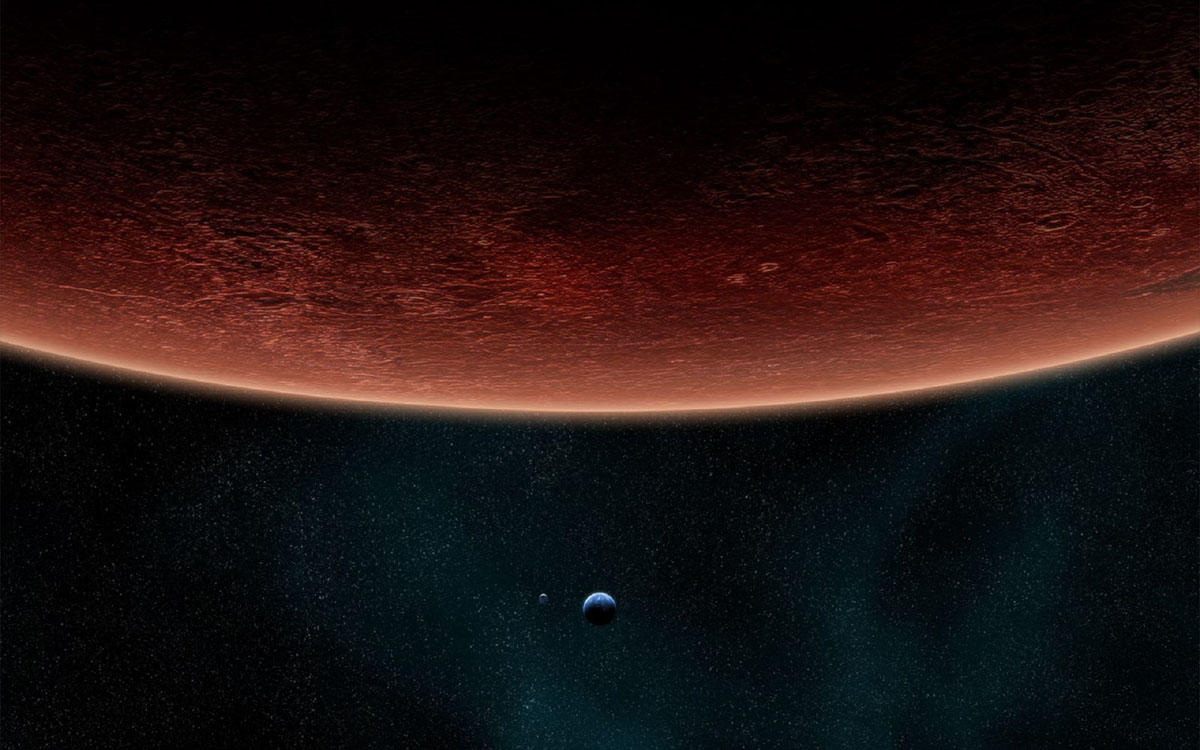why martian microbes won’t outnumber earth’s

A recently trumpeted paper on astrobiology did some very interesting modeling in a search for places on Mars where some very tough terrestrial microorganisms could survive and came to a very surprising conclusion. It appears that some 3.2% of the red planet could be habitable by volume, which would make it more friendly to life than our seemingly idyllic world, a world which has been populated with countless living things for billions of years. Now, considering that the Martian surface is as inhospitable to life as it gets because it’s constantly bathed in radiation potent enough to kill even the most radiation resistant creatures we know to exist, all of this habitable alien real estate is underground, where the deadly rays can’t reach and the temperature and pressure are just right for liquid water to flow through porous rock. Good news, right? If we just dig enough, a future robot, or better yet, a human astrobiologist, should be able to find honest to goodness little aliens.
Yes, little green germs aren’t exactly the little green men of classic science fiction, but hey, at least they’ll be a real extraterrestrial organism and we’ll know for a fact that we’re not alone in the universe. If life could arise on two planets in the same solar system and might be swimming under miles of ice on a moon that looks like a better and better candidate for alien habitation every day, certainly the entire universe is teeming with all sorts of living things, right? Hold that thought. One of the big caveats of using these models as a definitive guide for alien hunting is the lack of detail. In their zeal to report a sensational story, most pop sci outlets just repeated the great statistic and used it as a tie in to Curiosity’s upcoming mission to track down where exactly Martian microbes would settle into a nice colony to call home. But the simulations merely looked at how far down into the red planet’s caves and rocks we could go and still find possible traces of liquid water. The question of an active, frequently stirred and replenished nutrient base for life to function was briefly mentioned in the paper’s disclaimers for future research, despite being the second main prerequisite for habitability.
Of course it’s perfectly fine for a scientific paper to focus on just one narrow question and leave tangents for a team interested in building up on its work. It’s only frustrating when a premise is obviously flimsy or just out of left field and all the important details are waived off as something for others to refine. But in this case, the pop sci news circuit neglected to mention that the authors only set out to see how far Martian rovers could keep on following the water, as per NASA’s strategy for finding life on the red planet, and reported their results as one, big, definitive model showing that Mars is actually more habitable to life than Earth by volume while all it really says is that under the Martian surface, liquid water should be quite plentiful if we extrapolate some models of our own subterranean conditions and ecology to our diminutive, red, desert cousin in the inner solar system, and does a fairly thorough job of establishing the reasoning behind this conclusion. The leap from where we could find water on Mars to declaring that the typically monolithic block known as “scientists” estimate that the caverns of Mars hold three times the habitable territory by volume than Earth from that conclusion was simply a sensationalistic over-exaggeration. We don’t know how truly hospitable to life Mars really is.
But all that said, Mars is a very promising target for extraterrestrial microbes and the curtain of radiation which makes life nearly impossible on its surface will actually aid in our search for them. As noted in the reference, leaving our equipment to soak up the powerful UV rays for a few hours would sterilize it and any biota found in caverns or after digging several dozen feet into the red soil is then extremely likely to be native rather than the forward contamination from our own world. And yes, that means we absolutely should go there and devote as many resources as possible to make walking on Mars a reality. Of course the R&D involved won’t only benefit astrobiologists since the necessary reactors, self-sustaining habitats, and treatments to combat the damage caused by constant exposure to radiation could generate tens of billions in revenues and profits for all of the companies involved in putting together the mission’s toolkits if they channel them into mass market products ranging from medical devices to infrastructure. Actually, come to think of it, maybe one of the best things we’d be able to do for the world’s fragile economy is to go on a hunt for some little green germs and test all the pop sci news friendly astrobiology papers like this one on the actual surface of another planet. We tried just about everything else at this point and it doesn’t seem to be working, so why not think outside the box for a bit?
See: Jones, E., Lineweaver, C., Clarke, J. (2011) An extensive phase space for the potential Martian biosphere Astrobiology DOI: 10.1089/ast.2011.0660





